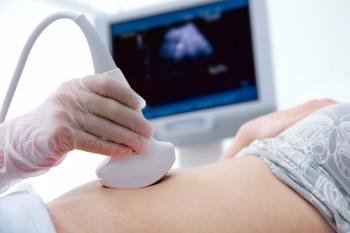Demographic and menstrual cycle characteristics are similar between menstrual cycle tracking apps (MCTA) users, other trackers, and nontrackers, according to a recent study published in the Journal of Medical Internet Research.
Takeaways
- Demographic and menstrual cycle characteristics are similar among users of menstrual cycle tracking apps (MCTAs), other trackers, and nontrackers, as shown in a study published in the Journal of Medical Internet Research.
- MCTAs are primarily used to track bleeding days and associated symptoms, facilitating the collection of menstrual cycle data. However, there are limitations such as missing data, loss to follow-up, and concerns about generalizability in population-based research on women's health.
- The study found that users of MCTAs, other trackers, and nontrackers have similar demographic characteristics, including income category, race and ethnicity, education status, and anthropometric measures.
- Health behaviors, such as alcohol consumption and smoking habits, as well as certain health conditions, including the use of hormonal contraceptives and heartburn or GERD diagnosis, varied between these groups, with nontrackers and other trackers differing from MCTA users.
- Menstrual cycle characteristics, such as age at first menstrual cycle, cycle regularity, and cycle length, did not significantly differ between MCTA users and nontrackers. However, other trackers were more likely to report bleeding durations of 4 to 7 days compared to nontrackers.
MCTAs may be used to track bleeding days and associated signs and symptoms, allowing menstrual cycle characteristic data to be collected. While studies have indicated MCTAs may improve population-based research on women’s health, there are multiple limitations such as missing data, loss to follow-up, and a questionable generalizability.
Currently, there is little data comparing demographic factors, health behaviors, and menstrual cycle characteristics of app users, trackers with other methods, and nontrackers. Investigators conducted a study to address this information gap.
Data was obtained from the parent Ovulation and Menstruation (OM) Health Pilot Study. The study employed surveys to gather data on health conditions, demographic characteristics, and menstrual cycle characteristics. Female participants aged 18 to 45 years from September 2017 to March 2018 were included in the analysis.
Exclusion criteria included being pregnant, experiencing amenorrhea because of chemotherapy, having received a hysterectomy or oophorectomy, and being unable or unwilling to provide an email address at the time of the survey. Demographic factors evaluated include income category, race and ethnicity, education status, and anthropometric measures.
Health behaviors included alcohol consumption and tobacco smoking habits, while health conditions included chronic diseases, reproductive health, and hormone use. Menstrual cycle characteristics included age at menarche, time to cycle regularity, cycle regularity, cycle length, and categorized bleed day duration.
Menstrual cycle tracking behaviors were also assessed, including MTCAs, physical calendars, digital calendars, hormonal birth control use, computer software, memory, or other. Groups were determined based on menstrual tracking behavior, including app users who used mobile apps, other trackers who used other methods, and nontrackers who did not track their menstrual cycles.
There were 263 women included in the analysis, 39% were app users, 37% nontrackers, and 24% other trackers. Of participants, 72.6% were aged 18 to 29 years, 64.6% were White, 79.5% had 4 years of college education or higher, and 46.8% had a household income below $50,000. Demographic factors were similar between menstrual tracking groups.
Having ever used hormonal contraceptives was reported in 90% of nontrackers vs 71.8% of app users. Additionally, only 6% of app users reported smoking over 100 cigarettes in their lifetime, compared to 17% of nontrackers. Heartburn or gastrointestinal reflux disease (GERD) was reported in 24.3% of app users and 12.4% of nontrackers.
Similar findings were observed when comparing app users to other trackers. Rates of smoking at least 100 cigarettes in their lifetime and having ever used hormonal contraceptives were significantly higher among other trackers compared to app users.
Having ever used hormonal contraceptives and having heartburn or GERD diagnosis were less likely among other trackers compared to nontrackers. These individuals were also more likely to have an anxiety or panic disorder diagnosis.
Menstrual cycle characteristics did not significantly differ between app users and nontrackers, with a common age at first menstrual cycle of 12 years and regular menstrual cycles experienced by over 60% of individuals in both groups. A cycle length of over 38 days was slightly more common in-app users vs nontrackers, at 10.7% and 4.1%, respectively.
Differences in menstrual characteristics were not observed between app users and other trackers. However, other trackers were more likely to report bleeding durations of 4 to 7 days than nontrackers.
These results indicated demographic and menstrual cycle characteristics are similar between app users, other trackers, and nontrackers. Investigators recommended further studies examine the reasons for tracking and tracking-related behaviors.
Reference
Adnan T, Li H, Peer K, Peebles E, James K, Mahalingaiah S. Evaluation of menstrual cycle tracking behaviors in the ovulation and menstruation health pilot study: cross-sectional study. J Med Internet Res. 2023;25:e42164. doi:10.2196/42164

















